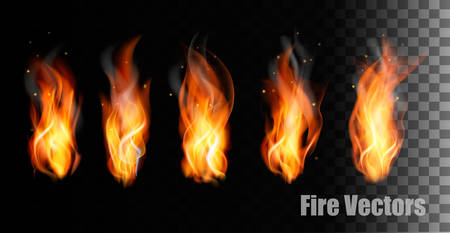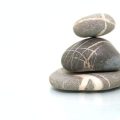A Harmony of Elements: An Introduction to Feng Shui
Stepping into a cosy British home, perhaps nestled in the rolling hills of the Cotswolds or tucked away in a bustling London borough, one might not immediately think of ancient Eastern philosophies at play. Yet, beneath the familiar warmth of a crackling fireplace or the gentle trickle of a garden fountain, the quiet influence of Feng Shui has begun to weave its subtle magic into British living spaces. Originating over three thousand years ago in China, Feng Shui is more than mere interior design—its an artful dance between our environment and our well-being, guided by the five elemental forces: Wood, Fire, Earth, Metal, and Water. As this centuries-old wisdom journeys westward, it finds new expression amidst classic Victorian terraces and modern flats alike. In this exploration, we’ll unravel how these Five Elements can transform not just rooms but lives, infusing British homes with a harmonious energy that reflects both tradition and contemporary style.
2. Wood: Nurturing Growth and New Beginnings
In the philosophy of Feng Shui, wood is revered as the element of vitality, fresh starts, and dynamic upward movement. It embodies the spirit of spring—when nature awakens and possibilities blossom. For those living in the UK, where gardens are cherished sanctuaries and wooden interiors hold a timeless appeal, the energy of wood is deeply woven into both daily life and cultural tradition.
The Symbolism of Wood in Feng Shui
Wood symbolises more than just trees or timber; it represents growth, expansion, and creativity. In a British context, this energy can be seen in the lushness of springtime bluebells carpeting ancient forests or the stately oak trees that line village greens. Indoors, wooden beams in a period cottage or a simple oak dining table echo a sense of stability and continuity while inviting renewal into our homes.
How British Gardens Embody Wood Energy
British gardens, renowned for their artful blend of wildness and structure, perfectly express the wood element’s balance between freedom and order. Whether you have a sprawling country garden in the Cotswolds or a petite urban courtyard in London, incorporating living plants fosters an atmosphere ripe with inspiration. Here’s how key features align with wood energy:
| Garden Feature | Feng Shui Wood Quality | British Example |
|---|---|---|
| Mature Trees | Strength & Protection | Rowan or Oak in public parks |
| Climbing Plants | Upward Growth & Expansion | Clematis on trellises |
| Fresh Herbs & Edibles | Vitality & Nourishment | Mint or rosemary borders |
| Wildflower Meadows | Natural Abundance | Poppies and bluebells in spring fields |
Nurturing New Beginnings Indoors with Wood Features
To channel this element within your home, look to wooden furnishings, flooring, or even decorative items like carved bowls and picture frames crafted from British ash or beech. These pieces bring warmth while encouraging personal growth—think of them as roots anchoring you to your intentions for renewal.
Practical Tips for Inviting Wood Energy Indoors
- Add potted plants such as ferns or English ivy to invigorate workspaces or living rooms.
- Select furniture made from sustainably sourced British wood to enhance natural harmony.
- Display floral arrangements to infuse your environment with seasonal freshness.
- Position wooden objects in the east or southeast corners of your home to activate new beginnings according to Feng Shui principles.
The gentle yet persistent force of the wood element is a reminder that every day offers an opportunity for growth. By harmonising your surroundings with nature’s cycles—whether through a window box bursting with daffodils or a hand-carved Welsh dresser—you invite not just beauty but also continuous inspiration into your life.
![]()
3. Fire: Igniting Passion and Warmth
In the world of Feng Shui, fire is far more than a simple element—it’s the dynamic force that enlivens a home, infusing every corner with passion, warmth, and vitality. The British relationship with fire is woven through centuries of tradition: imagine the comforting crackle of an open hearth in a snug London flat on a chilly evening, or the gentle glow of candles lighting up a drawing room as rain softly taps against Victorian sash windows. These moments aren’t merely atmospheric—they’re essential to creating spaces that radiate joy and heartfelt connection.
Fire’s presence in your home acts as a beacon for energy and celebration. Whether it’s the focal point of a living room fireplace adorned with family photographs and treasured ornaments, or a cluster of tealights flickering during a cosy supper, fire brings people together. In Feng Shui, this element governs fame and recognition—placing it thoughtfully can inspire confidence and ignite creativity within your space.
For many British homes, especially those where weather so often invites us to seek comfort indoors, fire offers both literal and symbolic warmth. It transforms gloom into glow and solitude into conviviality. Consider how even on the greyest of days, lighting a few scented candles can lift the spirits and foster an inviting ambience for friends or family. To harness fire’s benefits according to Feng Shui principles, introduce touches of red, orange, or gold through soft furnishings or artwork; allow sunlight to stream in wherever possible; and make room for moments by the hearth or around a table bathed in candlelight.
Ultimately, fire in Feng Shui is about more than heat—it is the heart of the home. It inspires laughter echoing across kitchen tiles, shared stories beside glowing embers, and love that endures long after flames have dimmed. By welcoming fire into our British abodes with intention, we kindle not just rooms but relationships, ensuring our homes are vibrant sanctuaries brimming with life and joy.
4. Earth: Creating Stability and Comfort
The earth element in Feng Shui embodies stability, comfort, and nurturing—a quiet strength that anchors us to the present moment. In the context of British homes, this grounding influence is beautifully reflected through the use of terracotta pots brimming with hardy herbs, traditional stonework reminiscent of Cotswold cottages, and a calming palette of neutral tones. These choices don’t simply echo rural aesthetics; they foster a sense of rootedness, echoing the reassuring embrace of the British countryside on a misty morning.
The Power of Natural Materials
Earth’s energy is best channelled through materials that carry weight and substance. From a sturdy Yorkshire flagstone floor to the humble clay flowerpot perched on a windowsill, each element whispers stories of endurance and belonging. Integrating these materials not only grounds your space but also creates an atmosphere where every guest feels welcome and at ease.
Earth Element Inspirations for British Homes
| Material/Feature | Feng Shui Benefit | British Countryside Reference |
|---|---|---|
| Terracotta Pots | Encourages nurturing and growth | Cottage garden herb planters |
| Stonework (walls, floors) | Provides stability and permanence | Cotswolds stone cottages |
| Neutral Colour Palettes | Promotes calm and balance | Misty moorland mornings |
| Ceramic Tiles | Adds a cool, stabilising touch | Classic English kitchen floors |
| Wool Throws & Rugs | Adds warmth and cosiness | Highland sheep farms |
Nurturing Spaces With Earth Energy
To truly embody the earth element, imagine your home as an ancient oak—strongly rooted yet inviting. Place terracotta pots near your entryway to greet you with life as you step inside. Allow natural stone to feature in fireplaces or accent walls, drawing the outside in. Choose soft furnishings in oatmeal, taupe, or gentle greys to evoke rolling hills beneath ever-changing skies. Each choice weaves together to create a sanctuary where stability reigns and comfort is always within reach.
5. Metal: Inviting Clarity and Precision
Within the tapestry of Feng Shui, the element of Metal is revered for its association with clarity, precision, and refined focus. In contemporary British interiors—where understated elegance meets practical sensibility—metallic accents emerge as both statement and subtlety, weaving an aura of orderliness cherished across the UK’s design landscape.
The Allure of Metallic Accents in British Homes
Step into a modern London flat or a thoughtfully renovated Victorian terrace, and you’ll likely notice how metal finds its place through gleaming copper kettles on the hob, brushed stainless steel fixtures in the kitchen, or elegant chrome handles adorning cabinetry. These elements are far more than decorative; they channel an energy that sharpens the mind and lifts the mood, echoing the brisk clarity of a morning stroll along the Thames or the crispness of a well-pressed Savile Row suit.
Fostering Order and Focus
Metal’s essence lies in its ability to cut through clutter—both physical and mental. By integrating metallic features, such as polished lampshades or steel-framed mirrors, homeowners invite a sense of discipline and efficiency into their everyday rituals. This mirrors the British penchant for neatness and organisation, whether it’s arranging books by colour on a shelf or ensuring the teapot sits just so upon its tray.
Cultural Reflections: From Tradition to Modernity
The British affinity for metal is steeped in history—from ornate silver tea sets passed down generations to contemporary appliances boasting minimalist lines. Today’s designers blend heritage with innovation, choosing metals that reflect light and provide structure without overwhelming warmth. It’s a nod to tradition, yet resolutely forward-looking—a balancing act at the heart of both Feng Shui and British style.
Incorporating metal within your living space is an invitation to embrace lucidity and purpose. Whether it’s a brass candlestick casting gentle illumination or a cutting-edge induction hob gleaming beneath glass pendants, each metallic touch whispers of clarity—a gentle reminder that life, like a finely set table, flourishes best where order reigns.
6. Water: Encouraging Flow and Reflection
In the tapestry of Feng Shui, water symbolises wisdom, adaptability, and the gentle yet persistent movement of life. It is the element that invites tranquillity and encourages reflection, much like the quiet streams winding through the British countryside or the soft patter of rain on a London windowpane.
Bringing Water Indoors
To experience the essence of water within your home, consider introducing serene aquariums or subtle indoor water features. The mesmerising motion of fish gliding through clear water can soothe a restless mind, while the gentle trickle from a tabletop fountain mirrors the soothing rhythm of British drizzle—familiar, comforting, and ever-present.
Garden Features Inspired by Nature
Outdoors, water elements such as small ponds or stone birdbaths echo the misty mornings found across the UK. These features don’t need to be grand; even a simple garden bowl catching raindrops can invoke a sense of calm and connection to nature’s cycles. In true British fashion, embrace the mist as part of your landscape, allowing it to soften boundaries and invite contemplation.
The Subtle Power of Movement
Water in Feng Shui is not only about serenity but also about encouraging positive flow—of energy, emotions, and opportunities. Placing water features in strategic locations can help balance stagnant corners and promote gentle movement throughout your living spaces. Just as a meandering brook shapes its course over time, so too can these thoughtful additions shape the atmosphere of your home.
Incorporating water is particularly resonant in Britain’s climate, where rain and mist are woven into daily life. Rather than resisting these elements, celebrate them as natural extensions of Feng Shui wisdom: let them remind you to pause, reflect, and allow life’s currents to guide you gently forward.
7. Weaving the Elements Together: Practical Tips for the British Home
Bringing the five elements of Feng Shui into a British home need not be an exotic exercise; rather, it can be a deeply personal journey that embraces cherished local traditions and everyday comforts. Here are some practical, culturally attuned ways to infuse Wood, Fire, Earth, Metal, and Water into your living space, creating harmony and vibrancy with a distinctively British touch.
Wood: Nurturing Growth and Renewal
Incorporate wood by displaying beloved houseplants such as English ivy or potted herbs on window sills. Antique oak furniture or a well-loved bookshelf can evoke a sense of heritage and growth, while floral prints on cushions or curtains nod to the timeless beauty of British gardens.
Fire: Igniting Passion and Energy
A traditional fireplace is the heart of many UK homes—let it glow during cooler evenings to gather loved ones together. If that’s not possible, candles in classic holders or a red tartan throw can bring warmth and vibrancy. Art depicting sunsets over the moors or lively market scenes also adds a subtle spark of Fire energy.
Earth: Cultivating Stability and Comfort
Channel Earth through natural stone coasters, terracotta pots, or pottery made by local artisans. Neutral tones—think creamy paints reminiscent of Cotswold cottages—ground a room. Layering woollen blankets on beds or armchairs echoes the comforting embrace of the British countryside.
Metal: Inspiring Clarity and Precision
Add Metal with polished brass doorknobs, silver photo frames filled with family memories, or a cherished tea set gleaming on display. Mirrors framed in wrought iron or pewter reflect light and lend clarity to hallways and sitting rooms.
Water: Encouraging Flow and Tranquillity
The gentle trickle of a tabletop fountain, blue-patterned crockery inspired by willow ware, or paintings of Cornwall’s rugged coastlines all invite Water’s soothing energy indoors. Sheer curtains billowing in the breeze let in soft daylight, mimicking the calming movement of water.
Honouring Local Traditions
The magic lies in blending these elements seamlessly with your own narrative—perhaps a vase from your grandmother’s collection (Earth), or a prized souvenir from seaside holidays (Water). Embrace the British love for layered history: mix inherited treasures with modern finds, balancing each element in every nook.
Cultivating Harmony Room by Room
Walk through your home with fresh eyes—notice which element might be missing or overrepresented in each space. A hallway may yearn for more lightness (Metal), while a kitchen could benefit from fresh herbs (Wood) on the windowsill. In weaving together these elemental threads, you’ll craft an environment that feels authentically British and profoundly harmonious—a sanctuary where tradition meets vibrant living.


